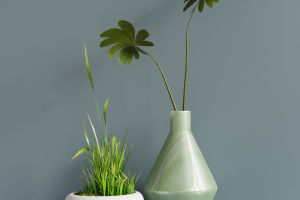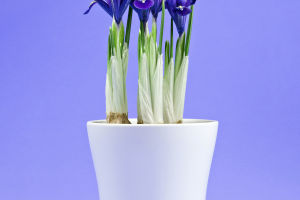Purity in Bloom
Lily of the Valley, is a perennial herb that graces gardens and natural landscapes with its delicate beauty and enchanting fragrance every spring.
Renowned for its elegant white flowers and sweet scent, this plant holds a special place in the hearts of many as a symbol of purity, hope, and happiness.
Its significance spans various fields, including gardening, and culture, where it continues to be cherished and utilized.
Botanical Characteristics
Lily of the valley is a modestly sized plant, typically reaching a height of only 15 to 30 centimeters. Its leaves are broad, oval-shaped, and glossy, usually growing in pairs.
The flowers are bell-shaped, pure white, and arranged along a slender stem, resembling a string of delicate bells—hence the name "lily of the valley." This plant is native to temperate regions of Europe and Asia, thriving in cool, humid environments. It is often found along forest edges, riverbanks, and meadows in valleys.
One of the remarkable features of the lily of the valley is its robust reproductive ability through its rhizomes. Once established, these rhizomes can rapidly expand, forming dense colonies.
This characteristic makes the lily of the valley an excellent ground cover plant, although it also requires careful management to prevent it from becoming invasive.
Horticultural Value
Due to its enchanting appearance and pleasant fragrance, Lily of the Valley is a favorite in gardening and floral design. In-home gardens, it is commonly used as a ground cover plant, especially in shaded areas under trees or along the edges of flower beds.
Its ability to thrive in such conditions makes it an ideal choice for adding a touch of elegance and fragrance to otherwise challenging garden spots.
Lily of the Valley is also a popular choice for creating bouquets, wreaths, and other floral decorations. Its association with weddings and celebrations is particularly strong, symbolizing purity, happiness, and good fortune.
Brides often include lily of the valley in their wedding bouquets, and it is a frequent component in floral arrangements for various festive occasions.
Cultivating the lily of the valley is relatively straightforward. It prefers cool environments with moist, well-drained soil. Regular watering is essential, especially during dry periods, to maintain the plant's health and vigor.
While the lily of the valley is generally resistant to pests and diseases, excessive moisture can lead to root rot, necessitating careful attention to drainage.
Cultural Significance
In Western culture, Lily of the Valley is imbued with rich symbolic meanings. It is often associated with purity, humility, and hope, making it a common feature in ceremonies and literary works.
In France, Lily of the Valley holds a special place as the "Flower of May." Every year on May 1st, the French celebrate "Lily of the Valley Day" (Fête du Muguet), a tradition where people exchange bouquets of Lily of the Valley flowers to wish each other happiness and good luck.
The association of Lily of the Valley with love and marriage dates back to the Victorian era. During this time, the flower was seen as a symbol of love and the pursuit of happiness.
Brides would carry bouquets of lilies from the valley on their wedding day, signifying pure love and a bright future. Additionally, Lily of the Valley is the emblematic flower for the thirteenth wedding anniversary, known as the gem wedding, representing the purity and longevity of a marriage.
As we cherish the beauty and significance of the lily of the valley, we must also commit to its responsible cultivation and preservation. By doing so, we can ensure that this symbol of purity, hope, and happiness remains a treasured part of our natural and cultural heritage.
Whether gracing a wedding bouquet, symbolizing love and good fortune, or serving as a reminder of the delicate balance in our ecosystems, the lily of the valley holds a timeless place in our hearts and minds.


